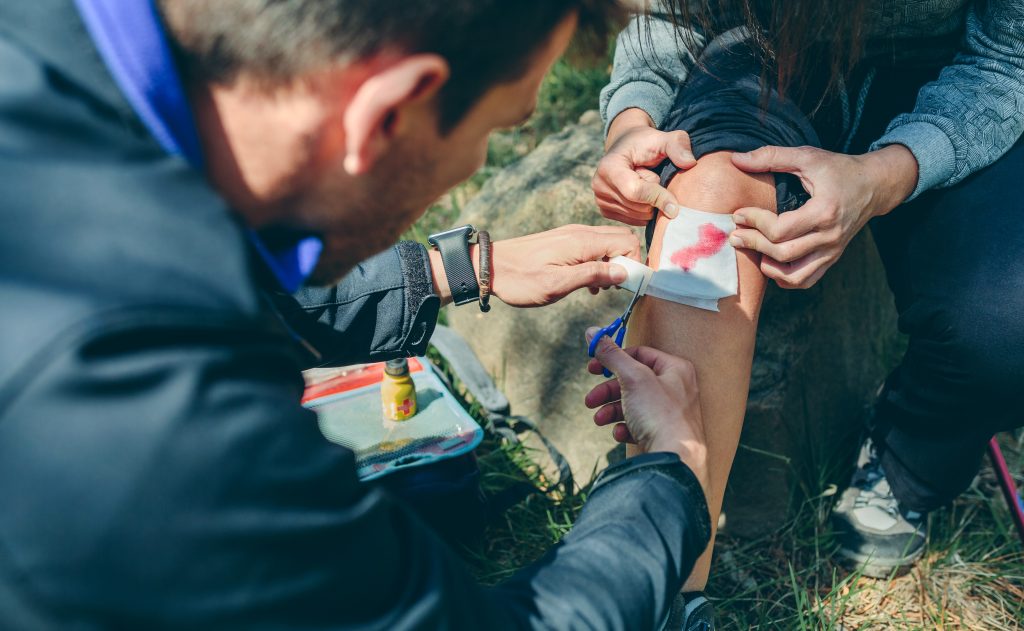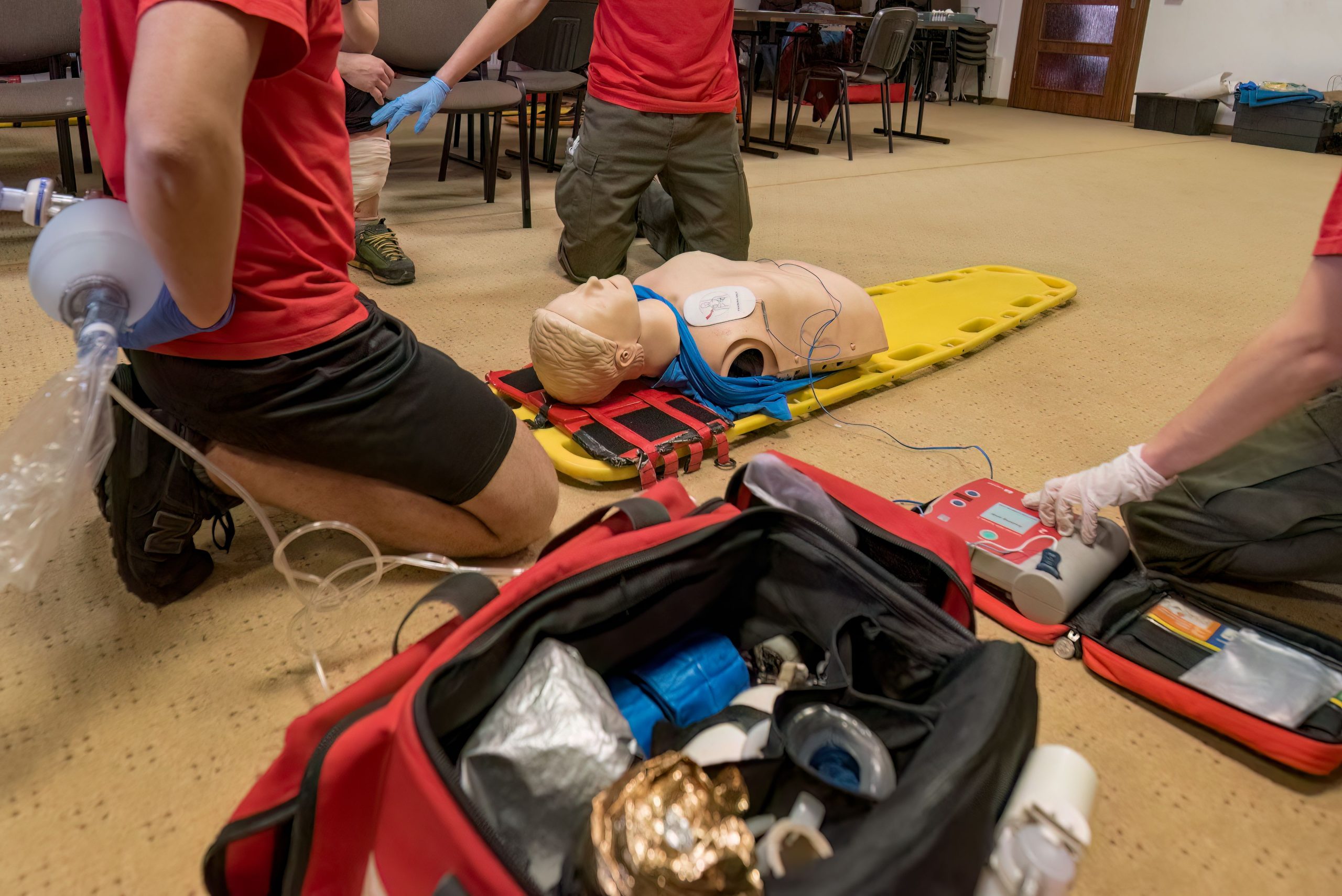
Summer is the perfect time for outdoor adventures. Whether you’re hiking in the mountains, camping by a serene lake, or simply enjoying a sunny day at the beach, being prepared for minor injuries and health issues is essential. The allure of warm weather and longer days invites everyone to explore the great outdoors, but with these adventures come potential risks. With the right first aid skills, you can handle unexpected situations with confidence and ensure that your summer experiences remain enjoyable and safe. In this article, we’ll explore essential first aid skills for common summer ailments, from pesky bug bites to serious conditions like heatstroke.
First aid training is a crucial skill set that empowers individuals to respond effectively to emergencies. It equips you with the knowledge to provide immediate care, which can be critical in remote or isolated locations where professional medical help might not be readily available. Whether you’re a seasoned outdoor enthusiast or a casual weekend warrior, knowing how to provide immediate care can make a significant difference. First aid skills not only help in managing injuries but also prevent complications and promote faster recovery. They also instill a sense of confidence and preparedness that enhances your overall outdoor experience.

Before embarking on any summer adventure, it’s important to have a well-stocked first aid kit. This kit serves as your frontline defense against minor injuries and ailments that may occur while exploring. Here’s a checklist of essential items to include:
Having these essentials on hand ensures you’re ready to tackle common injuries and discomforts. It’s also wise to periodically check your kit, replacing any expired medications or used supplies to keep it fully functional.
Summer is synonymous with bugs, and while most bites and stings are harmless, they can be irritating or even painful. Encountering insects is almost inevitable during outdoor excursions, and understanding how to manage these interactions can prevent minor irritations from escalating into bigger problems. Here’s how to manage them effectively:
Most bug bites cause minor reactions, like redness and itching. To treat a bug bite, clean the area with soap and water, then apply an antiseptic ointment. Over-the-counter antihistamines can help reduce itching and swelling. For persistent itchiness, applying a cold compress can provide relief. Keeping the affected area clean is crucial to preventing secondary infections, especially in more remote settings where hygiene may be challenging.
Bee and wasp stings require a bit more attention. If stung, remove the stinger as quickly as possible to prevent more venom from entering your body. Use a credit card or your fingernail to scrape it out. Apply a cold compress to reduce swelling and take an antihistamine if needed. In case of severe allergic reactions, seek medical attention immediately. It’s also wise to carry an epinephrine injector if you or someone in your group has a known severe allergy to stings.
Outdoor activities increase the risk of cuts, scrapes, and blisters. These are among the most common minor injuries during summer adventures, often resulting from falls or prolonged physical activity. Proper care is essential to prevent infection and promote healing.
For minor cuts and scrapes, rinse the wound with clean water to remove dirt and debris. Apply an antiseptic ointment and cover it with a sterile bandage. Keep the wound clean and dry, and change the bandage daily. For deeper wounds, applying pressure to stop any bleeding before bandaging is essential. Monitoring for signs of infection, such as increased redness or pus, is also crucial.
Blisters are common during long hikes or while wearing new shoes. To treat a blister, cover it with a blister pad or moleskin to reduce friction. If the blister pops, clean the area, apply an antibiotic ointment, and cover it with a bandage. Avoid puncturing blisters unless necessary, as the fluid inside aids in healing. Keeping feet dry and well-ventilated can help prevent blisters from forming in the first place.

Summer heat can lead to serious health issues, such as heat exhaustion and heatstroke. These conditions can escalate quickly, so understanding their symptoms and preventive measures is vital. Recognizing the symptoms and taking preventive measures are crucial.
Heat exhaustion occurs when your body overheats, often due to prolonged exposure to high temperatures. Symptoms include heavy sweating, weakness, dizziness, nausea, and headache. To prevent heat exhaustion, stay hydrated, take breaks in shaded areas, and wear lightweight clothing. Adequate preparation, such as acclimatizing to the heat and scheduling outdoor activities during cooler parts of the day, can also help prevent heat exhaustion.
Heatstroke is a medical emergency that requires immediate attention. It occurs when the body’s temperature regulation fails, leading to symptoms like confusion, rapid pulse, and loss of consciousness. If someone shows signs of heatstroke, call emergency services, move them to a cooler place, and apply cool compresses to lower their body temperature until help arrives. Quick response is critical, as heatstroke can lead to organ damage or even be fatal if not treated promptly.
Prolonged sun exposure can result in painful sunburn and dehydration. Both conditions are preventable with the right precautions, but knowing how to address them is also important. Here’s how to address these common summer woes:
To soothe sunburn, apply a cool compress or take a cold bath. Use aloe vera gel or a moisturizer to hydrate the skin. Over-the-counter pain relievers can help reduce discomfort. Avoid further sun exposure until the burn heals to prevent worsening the condition. Wearing protective clothing and applying broad-spectrum sunscreen regularly are effective preventive measures.
Staying hydrated is key to preventing dehydration. Drink plenty of water throughout the day, especially when engaging in physical activities. If you suspect dehydration, rest in a cool place and sip water slowly. Consuming electrolyte-rich drinks can also help replenish lost salts, particularly during intense physical activities. Recognizing early signs, such as dry mouth or dark urine, can help prevent dehydration from becoming severe.
Outdoor adventures often involve physical exertion, increasing the risk of sprains and strains. These injuries can be painful and limit mobility, so knowing how to manage them is vital for a swift recovery.
Sprains occur when ligaments are stretched or torn. Symptoms include pain, swelling, and bruising. Apply the R.I.C.E. method (Rest, Ice, Compression, Elevation) to alleviate symptoms. Rest the injured area, apply ice packs, use an elastic bandage for compression, and elevate the limb. Avoid putting weight on the injured area until it begins to heal, and consider seeking medical advice if the pain persists.
Strains involve the stretching or tearing of muscles or tendons. To treat a strain, follow the R.I.C.E. method and avoid putting weight on the injured area until it heals. Gentle stretching and strengthening exercises can aid recovery once the initial pain subsides. Listening to your body and not rushing back into physical activity too soon is crucial to avoid re-injury.
While first aid skills are invaluable, certain situations require professional medical attention. Recognizing when an injury or illness exceeds your ability to manage it is an important aspect of first aid. If an injury or illness doesn’t improve with basic first aid or if severe symptoms develop, seek help from a healthcare provider. Persistent pain, significant swelling, or signs of infection are indicators that professional evaluation is needed.
Being prepared with first aid skills and essentials can make your summer adventures safer and more enjoyable. By understanding how to manage common injuries and health issues, you can confidently explore the great outdoors. Remember to stay vigilant, keep your first aid kit stocked, and prioritize safety in all your activities. With these skills in your repertoire, you’re ready to tackle whatever summer throws your way. Prioritizing your health and safety ensures that your adventures remain memorable for all the right reasons.
Don’t wait until an emergency happens! Equip yourself with the vital skills needed to handle unexpected situations during your summer adventures. Contact CPR Classes Near You today to enroll in CPR and First Aid classes. Gain the confidence and knowledge to respond effectively to emergencies, ensuring a safer experience for you and your loved ones. Take the first step towards being prepared—sign up now!
Our primary goal is to ensure that you receive a top-quality CPR/First Aid certification. With our in-person training in Austin, you can learn CPR and BLS in just one class. Your presence is all that’s needed to continue with your lesson! During your session, you will complete all the live-training components necessary to ensure you receive your AHA Healthcare Provider certification card.
Our CPR Classes in Austin are discounted to $59.95 (saving you $20), and our CPR + First Aid Class is offered at $79.95 (also saving you $20). When looking for CPR Classes, ensure to check for the American Heart Association seal. Other sites might seem cheaper but frequently lack the official training credentials demanded by employers.
Upon successful completion of the course, you will obtain a CPR certification that is valid for two years. The AHA CPR certification is recognized with the highest acceptance rate among employers nationwide.
Indeed! Enroll in any CPR Certification Austin BLS course to extend your certification for an additional two years. The in-person BLS course and the Renewal Class are identical.
Anyone capable of completing the course independently should consider pursuing CPR training and CPR Certification. There is no minimum age restriction for obtaining a CPR certification in Austin through the American Heart Association (AHA)..
CPR training needs to be carried out in person to guarantee its effectiveness. Our experienced instructors offer an engaging and dynamic learning experience. Typically, employers do not recognize CPR certifications that are obtained solely through online courses.
All authorized American Heart Association training centers are obligated to display the entire video. After a three-hour session with CPR Classes Near Me Austin, your BLS CPR eCard will be promptly issued by the instructor on the same day!